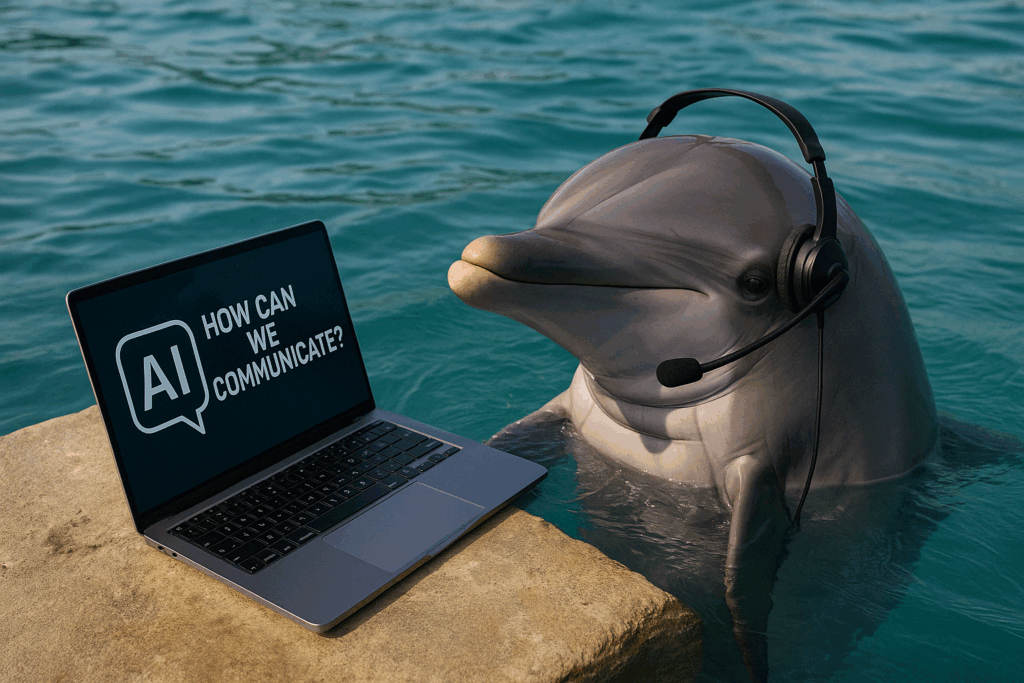Imagine standing on the deck of a boat, the sun casting shimmering patterns on the ocean’s surface, as a pod of dolphins gracefully arc through the waves. These marine mammals have long fascinated humans and are seen as one of the more intelligent creatures, not just for their playful antics but for their complex social behaviors and vocalizations. Now, with the advent of advanced artificial intelligence, we’re on the cusp of a breakthrough: understanding and perhaps even conversing with dolphins.
The Quest to Understand Dolphin Communication
Dolphins are known for their intricate vocalizations clicks, whistles, and burst pulses that they use to navigate, hunt, and interact socially.
Researchers have spent decades recording and analyzing these sounds, attempting to decipher their meanings. But the sheer volume and complexity of dolphin vocalizations has made this a daunting task.
Enter DolphinGemma
Google DeepMind, in collaboration with the Wild Dolphin Project (WDP), is now tackling this challenge with an AI model called DolphinGemma. Built on the open-source Gemma architecture, DolphinGemma is designed to process and generate dolphin-like vocalizations.
Trained on decades of acoustic data collected by WDP, the model can identify patterns and structures within dolphin sounds, offering fresh insights into their potential meanings.
⸻
A New Kind of Language Model?
DolphinGemma functions similarly to large language models used in human language processing. It takes sequences of dolphin sounds and predicts likely subsequent sounds—essentially learning the “syntax” of dolphin communication.
Impressively, the model is lightweight enough to run on mobile devices like the Google Pixel 9, allowing real-time field analysis of dolphin vocalizations.
⸻
The Wild Dolphin Project’s Role
Since 1985, the Wild Dolphin Project has conducted the world’s longest-running underwater dolphin research initiative. Their non-invasive methods have created an extensive archive of underwater video and audio recordings, linked to specific dolphins and behaviors.
These connections—between specific sounds and actions—form the foundation DolphinGemma uses to analyze and interpret dolphin communication.
⸻
Toward Two-Way Communication: The CHAT System
Beyond analysis, researchers are testing interactive communication through the Cetacean Hearing Augmentation Telemetry (CHAT) system. Developed with Georgia Tech, CHAT uses artificial whistles and underwater devices to create a shared vocabulary between humans and dolphins.
If dolphins mimic these whistles to request objects (like sargassum or scarves), AI helps verify and reinforce the communication link. By integrating DolphinGemma into CHAT, the feedback loop becomes smarter and faster.
⸻
The Ethics and Limits of “Talking” with Dolphins
While the idea of interspecies communication is thrilling, it raises complex ethical questions. Are dolphins truly “speaking” when they mimic whistles, or simply responding to training?
Also, there’s ongoing debate: does dolphin communication qualify as “language” by human standards? Even without meeting all linguistic criteria, analyzing their vocal structures offers profound insights into dolphin intelligence and social behavior.
⸻
A Gateway to Understanding More Species
DolphinGemma is more than a cool project—it’s a glimpse into the future of animal communication research. The model’s open-source nature allows researchers studying other cetaceans (like bottlenose or spinner dolphins) to adapt it to their own work.
This collaborative AI approach could unlock a new era of understanding how animals interact, think, and connect with one another—and with us.
⸻
Final Thoughts
The intersection of artificial intelligence and marine biology offers something both powerful and poetic: a new way to listen.
As tools like DolphinGemma evolve, they might not just decode sounds—they might rewrite how we perceive communication, consciousness, and the minds of other species.
And that possibility? That’s the real breakthrough.

